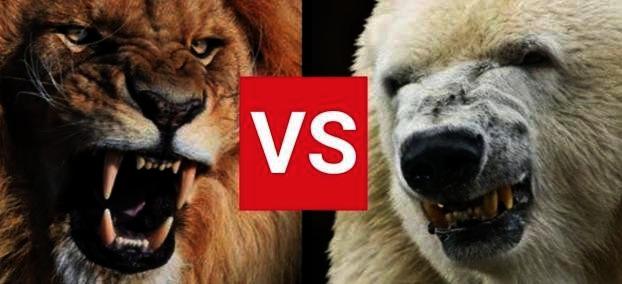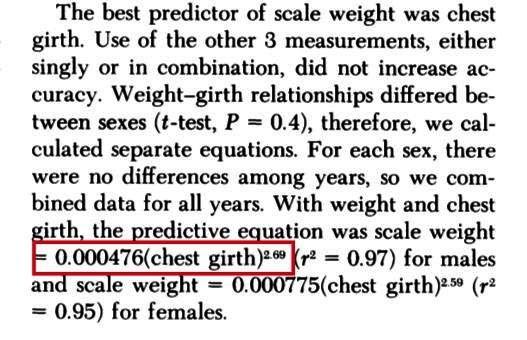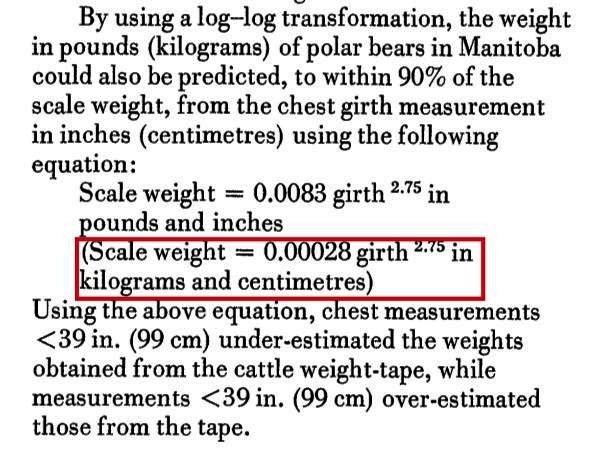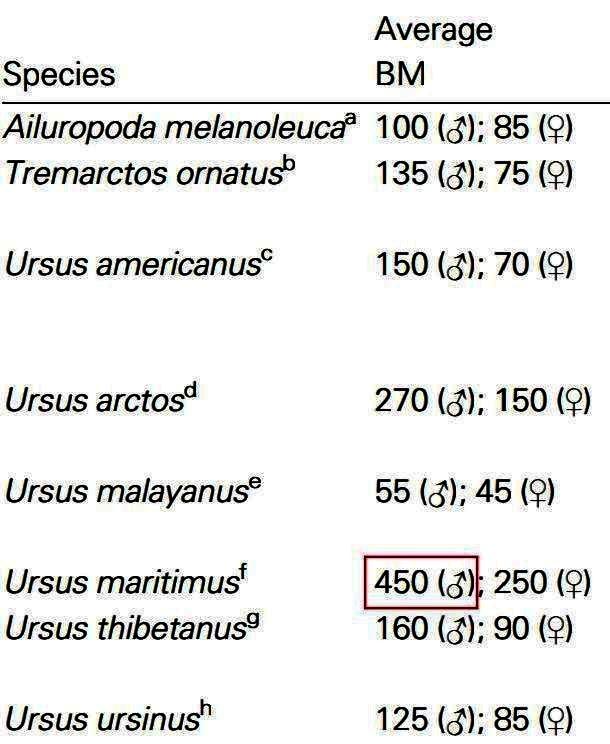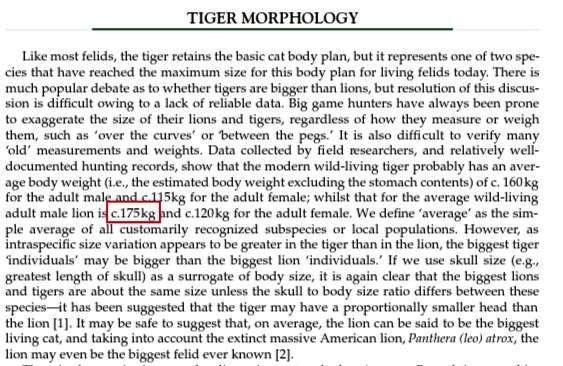Scapula Shape Index:
It's scapula width/Forelimb length ratio.Higher score indicates greater muscle attachement (infraspinatus, supraspinatus, subscapuralis) on the shoulder joint as well as greater ability to make certain movements like full-functional upper extremity movement including protraction,retraction,elevation,depression,upward rotation,and downward rotation all else being equal.
P.Leo : 23%
U.Maritimus : 26%
Edge : U.Maritimus
API:
Acromion process length/Forelimb length.Higher score in this ratio increases attachment for the deltoid muscle.
P.Leo : 2%
U.Maritimus: 6%
Edge : U.Maritimus
SMI:
Deltopectoral crest length divided by humerus length.Higher score Displays greater mechanical advantage of deltoid and pectoral muscles at the shoulder joint.
P.Leo : 60%
U.Maritimus : 69%
Edge : U.Maritimus
Scapula Length Index:
Scapula length divided by Forelimb length.Higher score Indicates greater speed of movement via relative proportions of components of the proximal forelimb as well as exertion of greater force from the forelimb.
P.Leo : 30%
U.Maritimus : 29%
Edge : P.Leo
HRI:
It is humerus mediolateral diameter at mid-shaft/humerus length.Robust forelimb bones protect the animal from violent stresses during grappling.
P.Leo : 9%
U.Maritimus : 10%
Edge : U.Maritimus
HRI2:
It is humerus anteroposterior diameter at mid-shaft/humerus length. Robust forelimb bones protect the animal from violent stresses during grappling.
P.Leo : 12%
U.Maritimus : 12%
Edge : Draw
HCMI:
It is Humeral circumference/articular length Often-used variable in analyses of bone strengths in locomotion. The higher the ratio is, the thicker the Humeral bone is.
P.Leo : 32%
U.Maritimus : 32%
Edge : Draw
HEI:
The HEI index measures the relative size of wrist stabilizing muscles and well as several grasping muscles in area which facilitate prey grasping such as m. pronator teres, m.extensor carpi radialis, m. extensor carpi ulnaris, m. flexor carpi radialis,m.flexor carpi ulnaris m. extensor digitorum communis, m. extensor digitorum lateralis, m.flexor digitorum superficialis, m. palmaris longus,and m. flexor digitorum profundus. .These muscles also likely help stability, pushing, and agility when legs are on ground.
P.Leo : 26%
U.Maritimus : 32%
Edge : U.Maritimus
PC2:
Scoring intermediate or low on PC2 are carnivorans that use their forelimbs to subdue,manipulate or excavate food items.Carnivorans scoring low on PC2, i.e. grapplers like felids, have relatively shallow trochlear furrows and relatively large and distally-projecting medial trochlear flanges. These features provide extra stability against forces acting in a nonparasagittal plane.
P.Leo : -0,531
U.Maritimus : -7,999
Edge : U.Maritimus
HTI:
It's Humeral trochlear length/Humeral length. Higher score increases muscle attachement on the elbow joint and allows for more ulnohumeral flexion and extension.
P.Leo : 19%
U.Maritimus : 22%
Edge : U.Maritimus
Brachial Index:
This measures radius length/humerus length. Lower scores in this ratio indicate greater forelimb muscle mechanical advantage and results in stronger muscles all else being equal.
P.Leo : 91%
U.Maritimus : 85%
Edge : U.Maritimus
Brachial Index 2:
This measures ulna length/humerus length. Lower scores in this ratio indicate greater forelimb muscle mechanical advantage and results in stronger muscles all else being equal.
P.Leo : 110%
U.Maritimus : 101%
Edge : U.Maritimus
Forelimb Proportion Index:
Length of proximal forelimb relative to length of distal forelimb ((Scapula length + Humerus length)/(Radius length + Metacarpal length)). Higher score Indicates greater degree of morphological specialization for producing large out-forces in the forelimb.
P.Leo : 141%
U.Maritimus : 149%
Edge : U.Maritimus
OI:
This metrics estimates tricep muscle strength. High values indicate greater ability to push with arms all else being equal. This helps a grappling cat hold prey and also helps a canid push and knock down an opponent. In addition, higher values may indicate greater stability and ability to change direction in a fight as well as greater relative mechanical advantage of the triceps brachii and dorsoepitrochlearis muscles used in elbow extension.
P.Leo : 20%
U.Maritimus : 20%
Edge : Draw
URI:
It is ulna mediolateral diameter at mid-shaft/humerus length. As mentioned above for humerus robusticity, Robust forelimb bones protect the animal from violent stresses during grappling.
P.Leo : 5%
U.Maritimus : 6%
Edge : U.Maritimus
URI2:
This measures ulna anteroposterior diameter at midshaft divided by ulna length. As mentioned above for humerus robusticity, a robust ulna resists stresses on bones during fights and increases resistance to bites to the forelimb.
P.Leo : 8%
U.Maritimus : 12%
Edge : U.Maritimus
RRI:
This measures radius mediolateral diameter at midshaft divided by radius length. As mentioned above for humerus robusticity, a robust radius resists stresses on bones during fights and increases resistance to bites to the forelimb.
P.Leo : 9%
U.Maritimus : 11%
Edge : U.Maritimus
RRI2:
This measures radius anteroposterior diameter at midshaft divided by radius length. As mentioned above for humerus robusticity, a robust radius resists stresses on bones during fights and increases resistance to bites to the forelimb.
P.Leo : 6%
U.Maritimus : 6%
Edge : Draw
MANUS:
Manus digit 3 proximal phalanx length divided by metacarpal 3 length.Higher score Indicates greater relative proportions of proximal and distal elements of the manus and size of the palmar surface.
P.Leo : 39%
U.Maritimus : 49%
Edge : U.Maritimus
Foot Posture:
All else being equal, species that are able to adopt plantigrade foot posture, such as bears,badgers, wolverines, many rodents, spider monkeys, and great apes, should be able to apply greater free moments to the ground than species that are restricted to digitigrade or unguligrade foot posture. Relative to digitigrade foot posture, plantigrade posture improves performance in lateral striking, lateral pushing, downward striking,forward pushing and rearward pulling.
P.Leo : Digitigrade
U.Maritimus : Plantigrade
Edge : U.Maritimus
Studies Used For The Above Comparison:
https://www.researchgate.net/publication/7531697_Body_size_ofSmilodon_Mammalia_Felida
https://academic.oup.com/zoolinnean/article/142/1/91/2691231
https://www.researchgate.net/publication/298056854_Sexual_selection_on_skeletal_shape_in_Carnivora
The Lion has been popularly known as the King Of All Beasts. However, in this side by side comparison,almost everything is in the Polar Bear's favor which points out to the Ursid having overall stronger,shorter,thicker, more muscular shoulders,forelimbs,bigger paws and the ability to produce even more force (based on its Forelimb Proportions and foot Posture) than the "King Of Beasts" even at similar size.Additionally, the Polar Bear has a proportionally broader chest.In fact, a 200 kg Polar Bear would have a chest girth of 128,8 cm based on these two equations :
Whereas an African Lion of equal body mass would only reach 125,3 cm based on this equation :

Overall, The Polar Bear seems to be a relatively stronger and better grappler than the Lion. When taking the huge weight gap between the two into account :
https://zslpublications.onlinelibrary.wiley.com/doi/abs/10.1111/j.1469-7998.2006.00286.x
https://www.researchgate.net/publication/266794969_What_is_a_tiger
Everything seems to be a huge and horrible mismatch. A Lion wouldn't do much against a Polar Bear in a fight.

